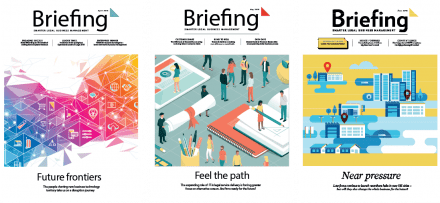2022: a year for lawyers?
Having said goodbye to the disruption of 2021, we’re all now having to recognise that various mutant strains of Covid-19 are likely to continue disrupting our lives and businesses into 2022.
However, given that what we’ve experienced has been the largest global peacetime disruption for over 100 years, it’s appropriate to reflect on how well the legal market has performed in such challenging times. Unlike other sectors, working from home has been effective, and both firms’ revenue and profitability have generally proved to be robust. We are performing so much better than other sectors of the economy and we need to be grateful for that.
However, in 2022, legal will face some new or even greater challenges. Working from home has inevitably strained the relationships that bind people together in law firms. Lawyers have re-examined their work-life balance and, in some cases, decided they don’t want to return to the rigid model of the past. For those prepared to accept the old model, it seems the price for their talent has risen, and lawyer salary inflation is likely to be a continuing trend well into 2022.
In such an environment, firms need to be clear about what they offer. This is important not just in terms of salary and other benefits but also in the area of culture and purpose, learning and development, career progression, flexible working, work-life balance and client contact. These propositions need to be clearly articulated and consistently delivered if firms are going to attract and retain the talent they need to service client demand.
Working from home has inevitably strained the relationships that bind people together in law firms. Lawyers have re-examined their work-life balance and, in some cases, decided they don’t want to return to the rigid model of the past
Across 2021, we saw an extremely hot M&A market, with over $5tn of deals announced globally. Although quantitative easing may taper off and interest rates rise marginally into 2022, the market for transactions is still expected to be benign.
A wave of Covid-19 related litigation is also likely to emerge as issues between landlords and tenants, relating to supply chains, or commodity and energy suppliers, emerge.
Furthermore, post-COP26, many businesses are going to be reviewing the opportunities to reposition their model in a carbon-neutral world. New technologies such as industrial batteries, green hydrogen, and carbon capture and storage, will see billions of dollars of investment as investors seek the winning technologies of tomorrow.
Indeed, the whole range of ESG initiatives will gain even more prominence. Many of these areas are traditional bread-and-butter issues for law firms – but they will need to reposition their offerings into a coherent product and, if necessary, work with other specialists to provide a comprehensive offering.
Additionally, governments around the world – having become used to interfering with all aspects of our daily lives – will be reluctant to let go. Regulation, in its various forms, will be even more significant to legal businesses’ clients.
Nonetheless, for firms that can respond to and embrace these market changes, 2022 has the potential to be another stellar year.
offices of innovation
In our recent Jomati report, Law firm innovation and use of legal tech – a reality check, we reviewed what is really happening in the legal technology space and whether law firms were being innovative in the use of client-facing legal technology.
From our research, it was clear that many firms were much more actively engaging in potential uses for client
technology. New and improved processes and products are being developed and rolled out by law firms. We may still be at an early stage in the effective use of client-facing technology, but the effort and investment devoted to it by firms is increasing as they seek to stay relevant to clients demanding the ‘better, faster and cheaper’ delivery of legal services.
What is particularly interesting is that many law firms are increasingly designating a ‘head of innovation’ to lead and focus this development, although others take the view that innovation should be an embedded feature of the firm and not delegated to any one individual.
Many of the largest and most profitable firms are innovating the most. They see it as essential in order to maintain their major client relationships, but also to protect and enhance their profitability.
Where a head of innovation had been appointed (which is the case in over 100 law firms) the appointees were from a mix of backgrounds. A few were from New Law, legal IT or product development backgrounds. Many were in fact former managing partners, senior litigation specialists or senior associates. But the biggest cohort were lawyers who were previously professional support lawyers in their firms. This may reflect the relative lack of experienced IT professionals with legal experience who are prepared to operate in law firms. It may also recognise that law firms want innovation, but not too much (perhaps evolution rather than revolution).
However, if supported by the firm’s senior leadership, these professionals will have a significant role in driving a change agenda and identifying and developing new products for their firm to deliver to its clients. Whether they and any innovation committee will adopt a topdown or bottom-up approach to innovation, it is clear that many firms are now bringing rigour and focus to their legal IT investment. Although change in law firms can appear glacial, in markets where clients are demanding more from them – including pricing certainty by utilising fixed fees – firms have a clearer incentive to adopt new ways of working in order to protect their overall profitability. Especially in the UK, many of the largest and most profitable firms are innovating the most. They see it as essential in order to maintain their major client relationships, but also to protect and enhance their own profitability.
Legal innovation officers who can really deliver on their job description are going to be increasingly sought after and valuable in the years to come.
This article can be found in Briefing’s March magazine: Take on the system
Technology central
Janet Day|Independent legal technology consultant
No business is immune to the changes technology has already created. The advent of Uber has changed the taxi business footprint. Airbnb has done the same for short-term accommodation, and Amazon for the entire retail space. And now, new models like Riverview Law and LOD – not to mention the rise of Big Four law – are changing the global legal market.
However, while it’s clear technology has created opportunity for these revised models in other vertical markets, law continues to be practised in the same way it has been for centuries. Yes, the speed with which transactions are conducted and communications exchanged has increased out of all recognition – but mechanics of instruction, documentation, revision and finalisation remain much as in Roman times.
So, if IT has created paradigm shifts in so many industries – why has it not really done that for law? And is one on the way?
So, if IT has created paradigm shifts in so many industries – why has it not really done that for law? And is one on the way?
First, much of the change elsewhere lies in the repeatable model. Calling for a cab has a limited number of variables when you use technology to take location out of the equation. The same goes for accommodation, and one could argue the single biggest variable in retail is the volume and variety of the sales catalogue.
Not so for legal transactions. Although component elements are entirely repeatable, the end-to-end piece often has unique identifiers and there’s insufficient repetition to allow for automation (via AI and machine learning) through the whole process. Where legal services have a high degree of repeatability they have already been subjected to varying degrees of technology-driven intervention.
But does this mean firms can avoid embedding technology in the core of their operations? Absolutely not.
Technology underpins every action a lawyer takes – from client contact, through digital presence for recruitment and market positioning, to research and precedent. No organisation can function without a mobile platform – law firms included. And as we change to more social and collaborative communication tools in a less structured workplace, technology again creates and supports.
The question one might ask is, what quantum of investment should you make – and how to prioritise where it goes?
The relationship between firm and client is also changing. No longer the centuries-old client/lawyer symbiotic union, it is now a relationship between the cost of the service delivered and the value the recipient perceives they gain.
Some newer entrants to the market make much play that they can support their new business model because of the investment made in a technology-driven platform and a set of optimised processes. Meanwhile, long-established practices are making investments in opportunity for new technology-driven businesses to enter the legal market – look at Mischcon de Reya and Allen & Overy.
The relationship between firm and client is also changing. No longer the centuries-old client/lawyer symbiotic union, it is now a relationship between the cost of the service delivered and the value the recipient perceives they gain.
The ability of technology to analyse and present vast datasets in digestible form now allows firms to offer different service models, based not on complete resolution but on proper containment and management of issues. AI tools, providing predictive, outcome-focused answers, allow both client and lawyer to concentrate on managing them. And new lawyers expect to work not just more flexibly, but in a more informed manner. Technology offers the opportunity.
Firms will change as more use a flexible workforce not necessarily co-located – but their dependence on technology increases broadly in line with Moore’s Law. Not embedding it in the weft and warp will only result in an unravelling.
This article originates from Briefing July/August 2018: In-house special










